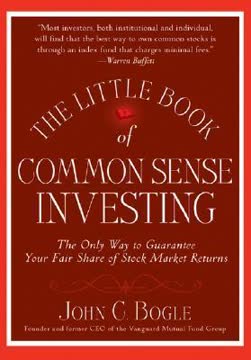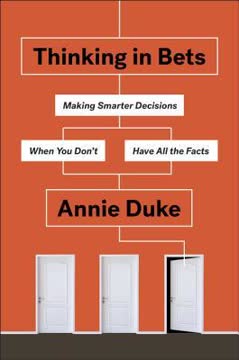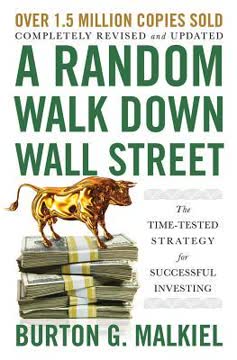Key Takeaways
1. Education inequality starts early and persists
"If a high-performing school could be opened in a low-income urban neighborhood and then successfully replicated twenty, thirty, or even forty times, it would help show that—with the right supports—poor, low-income, and minority students could achieve at the highest levels."
Systemic inequality: The U.S. education system is designed to be unequal from the start. Poor and minority students are systematically sent to the worst schools, often based on their zip code. This early disadvantage compounds over time, leading to lower college graduation rates and fewer economic opportunities.
Attempts at reform: Recent efforts to improve failing schools, such as the School Improvement Grants program and New York City's Renewal Schools initiative, have largely failed despite significant investment. Charter schools like Success Academy have shown promising results but face fierce opposition from entrenched interests.
The roundabout solution: Rather than trying to fix the entire system, a "roundabout" approach could focus on creating alternative pathways to success for disadvantaged students. This could involve:
- Expanding high-performing charter school networks
- Developing alternative certification programs
- Investing in targeted tutoring and support services
2. Alternative certification can disrupt traditional education paths
"If it's true that, with the right supports, most kids 'can,' then we should have a lot to work with. If it's true that, regardless of background, most of us 'can,' then considering alternative methods for job seekers to demonstrate accomplishment and job readiness should be on the table."
Rethinking credentials: Traditional college degrees are often used as signaling devices for employers, but they may not always reflect real-world skills or potential. Alternative certification programs could provide a more direct and efficient way to demonstrate job readiness.
Employer-driven standards: Leading companies could establish a set of test or program standards for high-paying jobs that would be considered instead of, or in addition to, traditional degrees. This could create a new ecosystem of education and training services catering to these standards.
Benefits:
- Lower costs compared to traditional higher education
- More accessible to disadvantaged students
- Allows for continuous learning and skill development throughout one's career
- Creates a more diverse talent pool for employers
3. Expanded Earned Income Tax Credit can support low-wage workers
"If we expand the earned income tax credit, we can just have the government make up the $7.75 difference. In other words, if you can get any job, the minimum you will earn is $15 an hour."
Boosting low wages: An expanded Earned Income Tax Credit (EITC) could effectively guarantee a minimum income of $15 per hour for all workers, without the potential negative employment effects of a higher minimum wage.
Cost-effective policy: While the upfront cost may seem high, the long-term benefits could outweigh the initial investment:
- Increased workforce participation
- Reduced reliance on other social programs
- Lower long-term costs associated with childhood poverty
- Increased tax revenue from higher incomes
Implementation improvements:
- Pay EITC benefits as part of regular paychecks
- Simplify rules to reduce errors and fraud
- Expand eligibility to include more workers without children
4. Skilled immigration boosts economic growth and job creation
"According to the National Academy of Sciences, Engineering, and Medicine (NASEM, if you plan to bore people at cocktail parties), on average, every highly educated immigrant (those with more than a bachelor's degree) between the ages of 25 and 64 who settles in the United States contributes the equivalent of $1 million to the rest of us, right now."
Economic benefits: Skilled immigrants contribute significantly to the U.S. economy through:
- Innovation and entrepreneurship (founding 51% of U.S. billion-dollar startups)
- Job creation (183 additional jobs for every 100 skilled foreign-born workers)
- Tax contributions and economic growth
Current system flaws: The U.S. immigration system is overly restrictive and inefficient, ranking second to last among developed countries in welcoming skilled immigrants and entrepreneurs.
Proposed reform:
- Maintain employer-based system
- Allow companies to hire foreign workers if they pay a minimum salary (e.g., $60,000) plus a 20% tax
- Provide a clear path to permanent residency after 5 years of employment
- Remove arbitrary caps on skilled worker visas
5. Bank capitalization reform can enhance financial stability
"Let's require banks to raise more equity capital, perhaps bringing total equity capital to between 20% and 30% of total assets. But, in place of bail-inable debt, let's let them raise that added equity capital through a new kind of preferred stock."
Current system weaknesses: Despite post-2008 reforms, the banking system remains vulnerable to crises, with a high likelihood of future taxpayer-funded bailouts for "too big to fail" institutions.
Proposed solution:
- Increase bank equity capital requirements to 20-30% of total assets
- Allow banks to raise additional capital through tax-advantaged preferred stock
- Make preferred stock dividends tax-deductible for banks and tax-free for investors
Benefits:
- Reduces the risk of taxpayer-funded bailouts
- Aligns incentives for bank management and shareholders
- Maintains banks' ability to lend and support economic growth
- Simplifies regulatory oversight
6. Universal retirement savings accounts can improve financial security
"If we expand the current earned income tax credit, let's triple our current plan and spend $200 billion. Let's carefully target families and individuals who need it the most."
Current system inadequacies: Nearly half of all working-age families have zero retirement savings, with the problem particularly acute for lower-income, minority, and non-college-educated families.
Australian model: Australia's "superannuation" system requires employers to contribute 9.5% of wages to employee retirement accounts, resulting in significant national savings.
Proposed U.S. reform:
- Divert Social Security taxes into personal retirement accounts
- Expand the income limit for Social Security taxes
- Use a portion of higher-income contributions to supplement lower-income accounts
- Maintain a safety net for current retirees and those with insufficient savings
Benefits:
- Universal coverage and earlier savings start
- Potential for higher returns through diversified investments
- Reduced strain on future government budgets
7. Common sense solutions often face political and systemic obstacles
"Patching such a flawed system with more chewing gum, chicken wire, and even money has been a losing battle for over half a century."
Entrenched interests: Many of the proposed reforms face opposition from powerful stakeholders who benefit from the status quo, including:
- Teachers' unions and education bureaucracies
- Large banks and financial institutions
- Political parties seeking to maintain their base
Systemic inertia: Existing systems and regulations often create self-reinforcing cycles that make change difficult, even when current approaches are clearly failing.
Overcoming obstacles:
- Focus on "roundabout" solutions that work around existing systems
- Build coalitions of diverse stakeholders who benefit from reforms
- Emphasize long-term economic and social benefits of proposed changes
- Start with smaller-scale pilot programs to demonstrate effectiveness
Last updated:
FAQ
What's "Common Sense: The Investor's Guide to Equality, Opportunity, and Growth" about?
- Author's Perspective: Joel Greenblatt, a professional investment manager, offers his insights on policies that could foster equality, opportunity, and growth in the U.S.
- Main Themes: The book discusses education reform, immigration, financial regulation, and retirement savings, proposing practical solutions to systemic issues.
- Unique Approach: Unlike typical policy books written by politicians or economists, Greenblatt provides a business and investment-oriented perspective.
- Goal: The book aims to address societal challenges by leveraging the strengths of government and the private sector to create a more equitable society.
Why should I read "Common Sense: The Investor's Guide to Equality, Opportunity, and Growth"?
- Practical Solutions: The book offers actionable ideas for improving education, immigration, and financial systems.
- Diverse Perspectives: Greenblatt's investment background provides a unique angle on public policy issues.
- Engaging Style: The author uses humor and relatable anecdotes to make complex topics accessible.
- Broader Understanding: Readers gain insights into how economic policies can impact equality and growth.
What are the key takeaways of "Common Sense: The Investor's Guide to Equality, Opportunity, and Growth"?
- Education Reform: Greenblatt emphasizes the need for school choice and charter schools to improve educational outcomes for low-income students.
- Immigration Benefits: The book highlights the economic advantages of skilled immigration and suggests reforms to attract talent.
- Financial Regulation: Greenblatt advocates for restructuring bank incentives to prevent future financial crises.
- Retirement Savings: The author proposes a system similar to Australia's superannuation to ensure better retirement outcomes for Americans.
How does Joel Greenblatt propose to reform education in the U.S.?
- School Choice: Greenblatt supports breaking the link between zip codes and school quality, advocating for vouchers and charter schools.
- Charter Schools: He highlights the success of charter networks like Success Academy in providing quality education to disadvantaged students.
- Systemic Challenges: The book discusses the difficulties in reforming public schools and the need for innovative solutions.
- High Expectations: Greenblatt stresses the importance of maintaining high expectations for all students, regardless of background.
What are Joel Greenblatt's views on immigration in "Common Sense"?
- Skilled Immigration: Greenblatt argues for policies that attract skilled immigrants, who contribute significantly to the economy.
- Economic Impact: He cites studies showing that skilled immigrants create jobs and drive innovation.
- Policy Recommendations: The book suggests simplifying the visa process and removing caps on skilled worker visas.
- Balancing Act: Greenblatt acknowledges the need to address unskilled immigration and refugee issues but emphasizes the immediate benefits of skilled immigration.
How does "Common Sense" address financial regulation and banking?
- Incentive Structures: Greenblatt proposes aligning bank incentives with long-term stability by increasing equity capital requirements.
- Preferred Stock Solution: He suggests using tax-advantaged preferred stock to strengthen banks' financial positions.
- Regulatory Balance: The book critiques excessive regulation and advocates for smarter, incentive-based approaches.
- Systemic Risk: Greenblatt emphasizes the importance of preventing "too big to fail" scenarios through better capital structures.
What retirement savings solutions does Joel Greenblatt offer in "Common Sense"?
- Superannuation Model: Greenblatt recommends adopting a system similar to Australia's, where employers contribute to individual retirement accounts.
- Social Security Supplement: He suggests supplementing Social Security with private savings plans to ensure adequate retirement income.
- Investment Choices: The book advocates for limited, diversified investment options to protect individuals from poor investment decisions.
- Early Savings: Emphasizing the power of compounding, Greenblatt encourages starting retirement savings early in one's career.
What are the best quotes from "Common Sense" and what do they mean?
- "A long habit of not thinking a thing wrong, gives it a superficial appearance of being right." This quote underscores the need to question entrenched systems and seek innovative solutions.
- "Doing the right thing." Greenblatt uses this phrase to describe expanding the earned income tax credit, highlighting its benefits for low-income workers.
- "Where did this King guy come from anyway?" This rhetorical question challenges the status quo and encourages rethinking outdated systems.
- "Investing is hard." The author acknowledges the challenges of investing, advocating for structured, disciplined approaches to retirement savings.
How does Joel Greenblatt suggest improving the earned income tax credit (EITC)?
- Expansion Proposal: Greenblatt proposes expanding the EITC to ensure all workers earn at least $15 an hour.
- Cost Efficiency: He argues that the long-term benefits of reducing poverty and increasing workforce participation outweigh the costs.
- Implementation Changes: The book suggests paying EITC benefits as part of regular payroll to improve accessibility and reduce fraud.
- Economic Impact: Greenblatt highlights the EITC's role in encouraging work and supporting low-income families.
What is Joel Greenblatt's stance on charter schools in "Common Sense"?
- Support for Charters: Greenblatt is a strong advocate for charter schools, citing their success in improving educational outcomes.
- Opposition Challenges: He addresses the political and union opposition to charters, arguing for their expansion based on performance.
- Replication and Sharing: The book emphasizes the importance of replicating successful charter models and sharing best practices with public schools.
- Parental Choice: Greenblatt believes that charters provide essential choices for parents in low-income areas, offering a path to better education.
How does "Common Sense" propose to address the challenges of globalization and technology?
- Education and Training: Greenblatt emphasizes the need for education and retraining to help workers adapt to technological changes.
- EITC Expansion: He suggests using the EITC to support workers displaced by globalization and automation.
- Long-Term Perspective: The book advocates for thinking like long-term investors, focusing on sustainable growth and workforce adaptation.
- Policy Balance: Greenblatt calls for policies that balance technological advancement with social responsibility and economic equity.
What unique perspectives does Joel Greenblatt bring to public policy in "Common Sense"?
- Investment Lens: Greenblatt applies investment principles to public policy, focusing on long-term returns and systemic efficiency.
- Business Experience: His background as an investment manager provides a practical, results-oriented approach to policy challenges.
- Innovative Solutions: The book offers creative, market-based solutions to complex societal issues, such as education and immigration.
- Common Sense Approach: Greenblatt emphasizes straightforward, logical solutions that prioritize equality, opportunity, and growth.
Review Summary
Readers found Common Sense to be an engaging book, though not primarily about investing as some expected. It discusses social issues like education, immigration, and banking regulation, offering pragmatic solutions. Many appreciated Greenblatt's logical approach and data-driven ideas, particularly regarding charter schools and alternative certification. Some critics found it too US-centric or lacking depth. Overall, reviewers valued the thought-provoking content and Greenblatt's ability to explain complex concepts, despite disagreements with some proposals.
Similar Books










Download PDF
Download EPUB
.epub digital book format is ideal for reading ebooks on phones, tablets, and e-readers.








